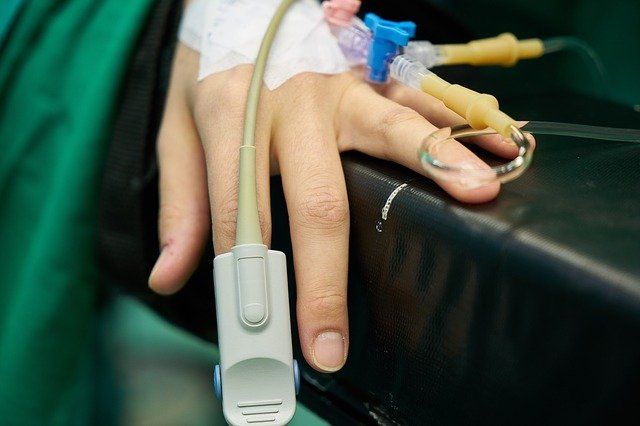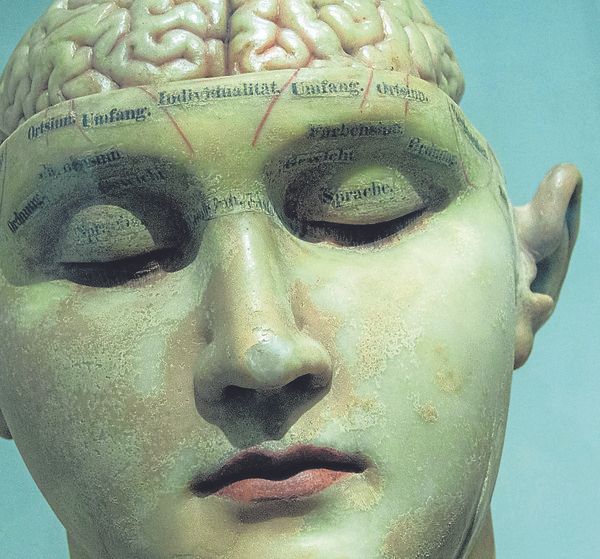In a two-year study in ten Dutch hospitals, doctors interviewed 344 heart attack victims. They found that 12% of cardiac-arrest survivors reported having ‘near-death experiences’ (NDEs) before being resuscitated.
They had experienced emotions, visions or lucid thoughts while unconscious with no signs of pulse, breathing or brain activity.
Some reported having ‘out-of-body’ experiences. One man remembered a nurse removing his dentures while he was unconscious. He believed he had seen this while floating above his body and watching the doctors working on him.
The study also showed that patients felt better about death, and more ‘spiritual’, for as long as eight years after their NDE.
Point of no return
The research will be seized on by those, academics among them, who theorise that the mind may continue to work after the brain has stopped – that the mind (or soul) can survive death.
Over the last few years, research teams from different universities and hospitals have been trying to make sense of NDEs.
Last year it was reported that doctors at the University of Southampton had spent a year studying patients resuscitated in the city’s general hospital after a heart attack.

All the people ‘brought back to life’ were, for varying lengths of time, clinically dead with fixed dilated pupils, no respiration, and no pulse.
EEG studies confirmed that the brain’s electrical activity, and hence brain function, ceases during this time. Out of 63 patients who survived, seven recalled emotions and visions while they were ‘dead’.
The survivors were interviewed within a week of their cardiac arrest and asked if they remembered anything during their period of ‘death’. Some recalled feelings of joy and peace; lost awareness of body; heightened senses; time speeded up; seeing a bright light; entering another world; encountering a mystical being or deceased relative; and coming to a point of no return.
Pushing the limits
Not all NDEs are alike. Typically, they involve feelings of deep peace, followed by sensations of floating up through a tunnel towards a bright light and into a beautiful kingdom.
But other NDEs involve terrifying accounts of being pulled downwards – towards a pit ‘inhabited by demons’. An article in The Daily Telegraph was entitled ‘Patients near death see visions of hell’. It focused on the research of Tony Lawrence, lecturer in psychology at Coventry University, who has probed the nature of negative NDEs.
There was a startling account of a woman who fought for life after a miscarriage: ‘It was an awful feeling – like I was going down a big hole and I couldn’t get up. I was going into this big pit. I was going further and further down, and trying to claw my way back up and kept slipping’.
But what do the results show? The cardiologist who led the Dutch research team, Dr Pim van Lommel, says their study ‘pushes at the limits of medical ideas about the range of human consciousness and the relationship between mind and brain’.

Dr Peter Fenwick, a consultant neuro-psychiatrist at London University, told The Sunday Telegraph: ‘If the mind and brain can be independent, then that raises questions about … a spiritual component to humans and about a meaningful universe with a purpose’.
For him, the evidence points to the existence of human consciousness without a body – in other words, a soul.
Out of their minds?
But are these people out of their bodies, or just out of their minds? Perhaps the drugs given to the patients can explain their experiences.
However, the Southampton researchers were able to rule out unusual combinations of medications as the cause, because the resuscitation procedure was the same in every case.
Other critics have attributed these experiences to a collapse of brain function caused by lack of oxygen. Yet the medical records of the Southampton cases show that none of the subjects had low levels of oxygen.
The Lancet report also mentions that epilepsy and electrical stimulation of the brain are possible causes.

Dr Fenwick says: ‘In a coronary, the brain goes down within 16 seconds and it then stays off-line until you recover slowly. Now, either these accounts arise because brain and consciousness become split or because they are a retrospective construction of the experience of unconsciousness. I would probably go for a splitting’.
Proving nothing?
Dr Parnia, a clinical research fellow and registrar at Southampton Hospital, said: ‘I started off as a sceptic but, having weighed up all the evidence, I now think that there is something going on.
‘Essentially, it comes back to the question of whether the mind or consciousness is produced from the brain. If we can prove that the mind is produced by the brain, I don’t think there is anything after we die because essentially we are conscious beings.
‘If, on the contrary, the brain is like an intermediary which manifests the mind, like a television will act as an intermediary to manifest waves in the air into a picture or sound, we can show that the mind is still there after the brain is dead. And that is what I think these near-death experiences indicate.’
However, Dr Sue Blackmore, a psychiatrist who has made a special study of these phenomena, declares that although the research is good work, ‘it proves absolutely nothing about the soul. All claims about this being evidence for consciousness existing without a brain are unfounded, baseless rubbish’.
Difficulty
The problem with near-death experiences is that they are exactly that – near-death experiences and not death experiences.
Does the cessation of electrical activity mean that the person is dead – or are they just in the process of dying? Body tissues are sensitive, and real death rapidly brings irreparable damage.
The fact that these patients were resuscitated means that little damage occurred and thus begs the question as to whether they actually did die.
As to the question of emotions and visions, the difficulty lies in understanding what happens to the brain when it is ‘nearly dead’. When brain cells begin to die, and brain chemicals are no longer controlled, what sort of hallucinations are possible?

The strikingly similar experiences of ‘clinically dead’ patients might simply be a common psychological phenomenon, which occurs as the mental software begins to crash.
The essential point is that such experiences provide no reliable information about an after-life.
Any true after-life experience occurs, by definition, in another dimension. We can have no confidence that the tools and methodology of science apply – the laws of that ‘universe’ would be totally different from ours.
Spiritual dimension
It is clear, therefore, that to explore the spiritual dimension, we have to use a totally different approach. Fortunately, one is available.
The Bible claims to be the source-book that God has provided to reveal something of that spiritual world. It is, if you like, a ‘dimension-crossing-communication-device’ to show us spiritual realities. This is not just theory; there are vastly more people who testify to its effectiveness than have had NDEs!
The Bible records a story, told by Jesus Christ, which touches on the whole subject of people bringing back knowledge from the grave. It goes like this:
An evil rich man and a good poor man both die. The rich man finds himself in torment and cries out to Abraham. He asks that the poor man should rise from the dead and warn his five brothers, ‘so that they will not come to this place of torment’.
Abraham replied: ‘They have Moses and the Prophets [the Old Testament Scriptures]; let them listen to them’.
‘No’, he said: ‘but if someone from the dead goes to them, they will repent’.
Abraham’s response is shocking: ‘If they do not listen to Moses and the Prophets, they will not be convinced even if someone rises from the dead’.

Righteousness for sinners
And, of course, someone did! On the first Easter morning, Jesus Christ himself rose from the dead.
The Scriptures tell us that he came from the glory of heaven, the eternal Son of God, to live as a man and to die as a substitute. He bore our sins in his own body on the cross, says Peter, that we might be declared righteous (‘justified’) in the sight of a holy God.
Christ’s own perfect righteousness is credited to sinners who trust him as their Saviour. For he was ‘delivered up because of our offences, and was raised because of our justification’ (Romans 4:25).
But if people reject the testimony of Scripture, they will certainly not be convinced by someone coming back from the dead. This is the ironic point of Jesus’ story about the rich man and the poor man; most people didn’t – and still don’t – believe in him, though he has indeed risen from the dead.
But to those who do believe, he gives eternal life! (John 10:28).



